|
View as a two-column galley proof
View as a feature
Theo Durrant: The Monster in the Belfry
by Jay Robert Nash
On the surface, William Henry Theodore Durrant, called Theo by his friends, was a mild-mannered, pleasant youth who was the soul of propriety, a much-respected church worker, and a bright medical student. He promised to have a distinguished career as a doctor. Beneath the surface of his pleasant personality, however, lurked a sexual pervert and homicidal maniac.
Durrant, born in 1871, attended Cooper Medical College in San Francisco and was a member in good standing at the Emanuel Baptist Church, where he was also an assistant Sunday school teacher. Durrant earned money from the church as an usher at Sunday services, and was the secretary to the church's youth group, Christian Endeavor. He often worked about the church, fixing pews, plastering cracks in walls, and sealing leaky pipes.
 |
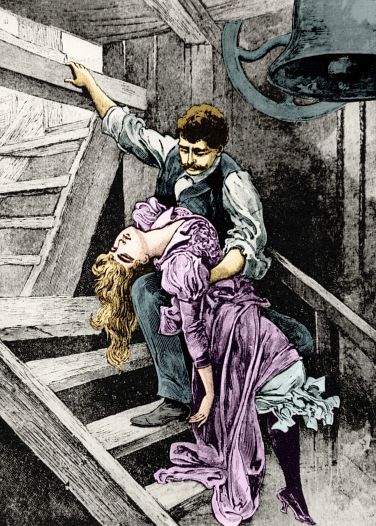 |
| Theo Durrant carrying the body of one of his murder victims, Blanche Lamont, to the belfry of San Francisco's Emanuel Baptist Church where he hid the corpse. |
It was rumored that Durrant had exposed his naked body to a young women in the church library, but the church elders, dismissed this tale as "idle gossip." Moreover, Durrant, as everyone knew, had just met and was enamored with an attractive high school senior, Blanche Lamont, who had plans to become a teacher.
Lamont and Durrant were seen stepping off a streetcar on April 3, 1895, at about 4 p.m., and were then seen strolling into the church. Theo took the girl into the church library, where he quickly shed his clothes. This brought a scream from Blanche Lamont.
 |
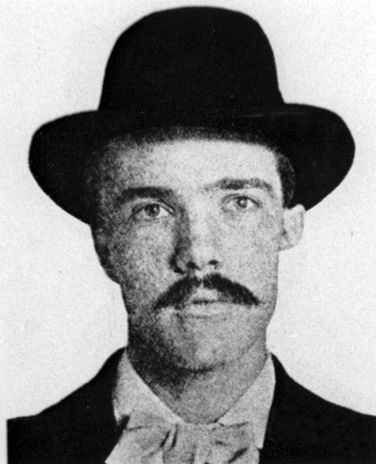 |
| William Henry Theodore "Theo" Durrant, San Francisco medical student, church worker and sex killer. |
As she continued to scream, Durrant angrily raced to the girl and placed his powerful hands about her throat, choking the life out of her. She fell limp into his arms and he carried her into an anteroom, where he dressed. He then dragged the body slowly up the stairs to the belfry.
At one point, Durrant had to climb a ladder, and as he did so, he dragged the body of his victim after him by her long, luxurious hair. Once in the belfry, Durrant sexually assaulted the corpse and then placed a wooden block beneath its head, as if it were a makeshift pillow.
 |
 |
| The Emanuel Baptist Church in San Francisco where Durrant murdered two women parishioners in 1895; his sister, Beulah Maud Durrant, changed her name to Maud Allen, becoming a prominent pianist, actress and dancer. |
Durrant then climbed down the ladder and entered the church, where an organist noticed his disheveled appearance. "I was fixing a gas jet and I inhaled some fumes by mistake," he said in explanation. He then walked calmly from the church.
When Blanche did not return home that night, her relatives notified police and officers arrived at Durrant's door the next day, telling him that the girl had last been seen alive in his company. Durrant glibly told officers that he had no idea where the girl might be. He added that there were a lot of gangs wandering about San Francisco, always looking for young girls to press into their white slavery rackets. Shanghaiing of young girls was then commonplace.
 |
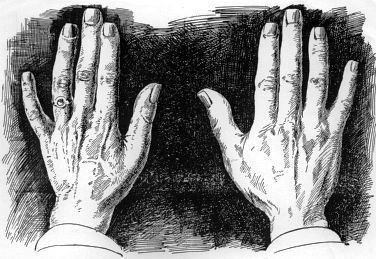 |
| The hands of killer Theo Durrant, used to strangle two women he ostensibly loved. |
Minnie Williams, a petite, 21-year-old parishioner, was Durrant's next victim. She met Durrant many times in the library, where the two had sexual relations. Even though Williams was a willing sex partner, Durrant, moved by the dark forces within him, felt compelled to kill her. While making love to her, Durrant, as he later stated in his detailed confession, suddenly tore away a part of the woman's dress, suffocating her with it. He then mutilated the body with a knife and, like his previous victim, had sex with the corpse.
Durrant made little effort to hide Williams' body, placing it in the library closet. The next morning, a group of women entering the library discovered the horrific scene. The walls and floor of the library were blotched with Minnie Williams' blood. Some fainted at the gory sight while others went screaming for the police.
A patrolman ran into the church from the street and quickly found Minnie's body in the closet. Detectives were called, and one of them, following "a hunch," climbed the stairs and ladder to the belfry and there found the body of Blanche Lamont, describing the corpse later as "white like a piece of marble."
 |
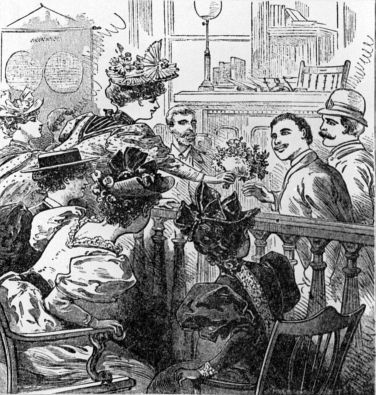 |
| Theo Durrant is shown at his murder trial, receiving a bouquet of a flowers from one of the many young females infatuated with him. |
Detectives then returned to Durrant's lodgings and found the youth asleep. He calmly denied having anything to do with the two bodies in the church. A search of his room soon revealed Minnie Williams' purse, which Durrant had hidden in one of his suitcases. Arrested, Durrant's trial proved spectacular.
The killer sat in court smiling and waving to scores of young women, who thought him "handsome in a dark sort of way." These women wrote him mash notes and presented him with flowers every day of the trial. More than 100 witnesses testified at the trial, but the most damning were those who insisted that they had seen Durrant with the two victims shortly before their disappearances and deaths. He was found guilty and condemned to death.
The youthful murderer mounted the scaffold at San Quentin to be hanged on January 7, 1898. The hangman came forward, about to drop the noose about Durrant's neck. The condemned man said: "Don't put that rope on, my boy, until I talk." He was given no chance to talk, however, and was promptly sent through the trap.
 |
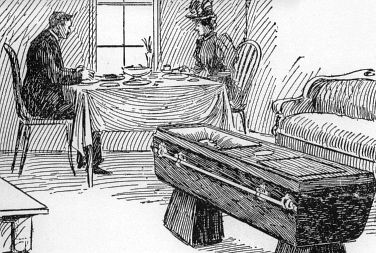 |
| In this bizarre sketch, the Durrants are shown having lunch in the warden's office at San Quentin, while their son lies in a coffin a few feet away after having been hanged for murder on July 7, 1898. |
Durrant's parents watched him die, a strange pair, who sat smiling in the courtyard as their son dangled from the end of the rope. "They seemed proud of the whole thing," the prison warden later stated. The Durrants went to the warden's office to claim their son's body later. It was resting in an open wooden coffin. As a gesture of courtesy, the warden asked the Durrants if they were hungry. Yes, they answered, they had had nothing to eat all day.
The warden ordered them some dinner and, in the presence of their son's body, the Durrants sat down at a table, greedily eating roast beef and boiled potatoes. Mrs. Durrant glanced a few times to the blackened face of her murderous child, his eyes bulging and tongue protruding through clenched teeth, and showed no emotion. She merely turned back to her husband and said: "Papa, I'd like some more of that roast beef."
View as a two-column galley proof
View as a feature
|